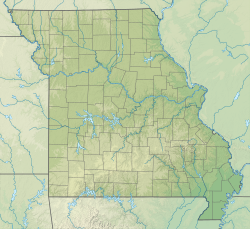Stratigraphy
Early geologists offered a variety of names for what is now known as the Bonneterre Formation. In 1894, Missouri state geologist Arthur Winslow proposed St. Francois limestone as a name for thick limestone beds, including everything between what are now known as the Lamotte Sandstone and the St. Peter Sandstone. He described the lower part of that formation (now comprising the Bonneterre and the Elvins Group) separately as the St. Joseph limestone. Charles Rollin Keyes's Fredericktown limestone included everything between the Lamotte and the Potosi Dolomite when he first described it in 1896, but his later uses of the name were in a more restricted sense equivalent to the modern Bonneterre.
In 1901, Frank Lewis Nason was the first to apply the name Bonneterre (originally spelled Bonne Terre) to these rocks, identifying a type section near the city of Bonne Terre, Missouri. [11]
The Bonneterre is conformably overlain by the Davis Formation. The Bonneterre Formation lies conformably on the Lamotte Sandstone and in places lies directly on the Proterozoic igneous core of the mountains.
Thickness
In the outcrop area the Bonneterre has an average thickness of 375 to 400 feet. It is present in the subsurface throughout Missouri and has a maximum recorded thickness of 1580 feet under Pemiscot County in the Missouri Bootheel.
This page is based on this
Wikipedia article Text is available under the
CC BY-SA 4.0 license; additional terms may apply.
Images, videos and audio are available under their respective licenses.


